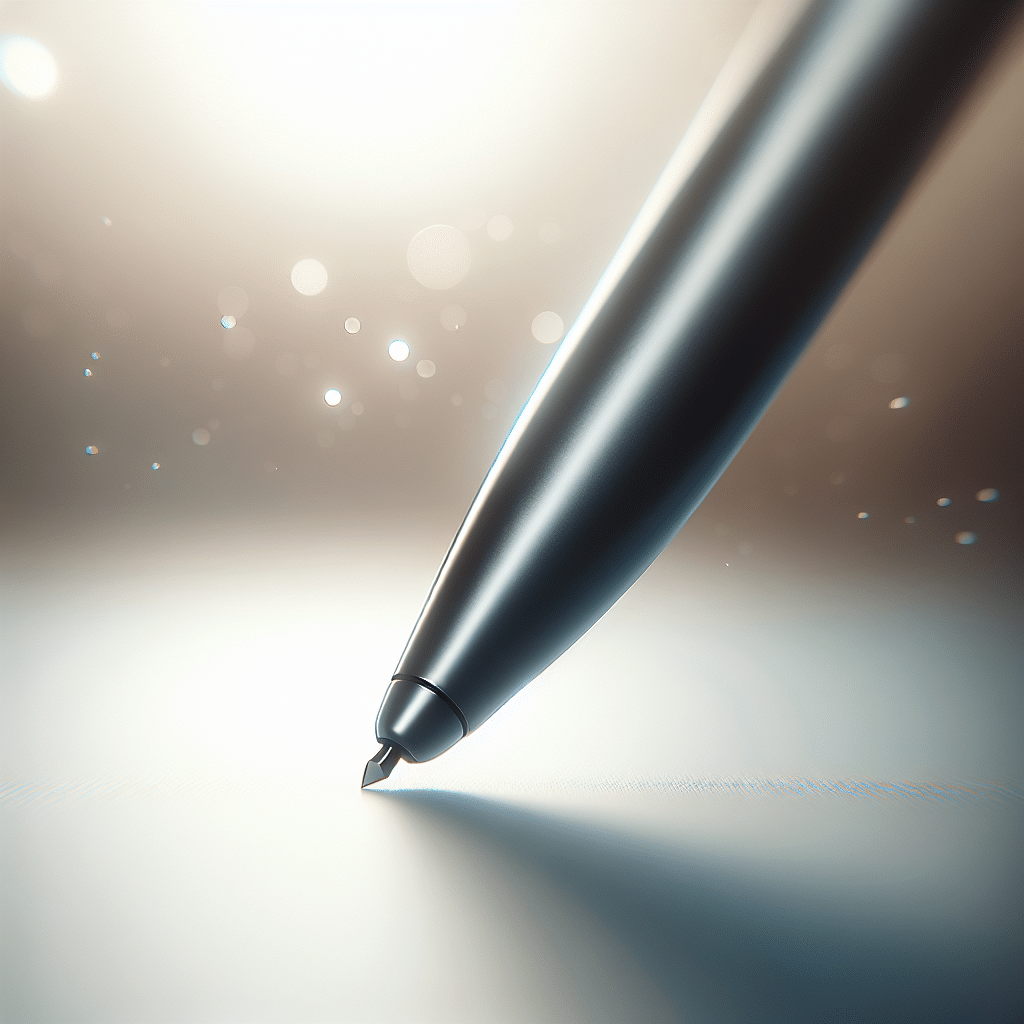Understanding Stylus Tips for Smooth Writing
When it comes to using a stylus for digital writing, the tip of the stylus plays a crucial role in achieving a smooth experience. The right stylus tip can not only enhance the precision of your writing but also elevate your overall productivity. In this article, we will explore various stylus tips that cater to diverse needs, improving the fluidity and ergonomics of your writing experience.
Types of Stylus Tips
1. Rubber Tips
Rubber stylus tips are among the most common types found in budget-friendly styluses. They are typically soft and provide a moderate level of friction against the screen.
- Pros:
- Inexpensive and widely available.
- Good for basic navigation and drawing.
- Cons:
- Can wear down more quickly than other materials.
- Less precision in detailed work.
2. Plastic Tips
Plastic tips provide a slightly different feel than rubber, often featuring a smoother glide across the screen. They can result in less friction which allows for a different touch response.
- Pros:
- Sleek design often offers better aesthetics.
- Durable and less prone to wear down quickly.
- Cons:
- Can be less comfortable for extended use.
- May create a sticky sensation on some screen types.
3. Fiber Tips
Fiber stylus tips are made from a group of synthetic fibers, creating a soft texture ideal for smooth writing and drawing. They work exceptionally well with capacitive screens.
- Pros:
- Good tactile feedback mimics pen-on-paper sensation.
- Flexible and can accommodate various writing styles.
- Cons:
- May leave streaks or smudges if not maintained.
- Durability may vary depending on quality.
4. Mesh Tips
Mesh stylus tips are composed of tightly woven fabric that offers a unique combination of softness and precision. They are particularly favored among artists for their ability to mimic traditional drawing tools.
- Pros:
- Excellent precision while maintaining the comfort of a soft tip.
- They last longer than rubber or fiber tips.
- Cons:
- Typically more expensive than other types.
- May require a cleaning routine to maintain performance.
5. Nib Tips
Nib tips are more advanced stylus tips designed for professional use, often found on styluses made for specific tablets like the Apple Pencil or Wacom devices. They usually come in different hardness levels.
- Pros:
- Highly responsive and allows for pressure sensitivity.
- Enables precision in art and writing applications.
- Cons:
- Higher cost compared to standard tips.
- Requires specific compatible devices.
Choosing the Right Tip
When selecting a stylus tip for your writing needs, consider the following factors:
1. Screen Compatibility
Some stylus tips work better on certain screen types, such as capacitive screens found on most tablets and smartphones. Ensure compatibility to ensure optimal performance.
2. Writing Style
Evaluate your primary use of the stylus. If you tend to write or draw with precision, investing in a stylus with nib or mesh tips may be ideal. Conversely, rubber tips can sufficiency for note-taking.
3. Comfort
The ergonomics of the stylus tip can significantly affect your writing experience. Choose a tip that feels comfortable in your hand and meets your tactile preferences during extended use.
4. Durability
Look for stylus tips that offer a good balance between softness and durability. Tips that wear down quickly may hinder your performance and require frequent replacements.
Maintenance Tips for Stylus Tips
Proper maintenance can extend the lifespan of your stylus tips significantly.
-
Regular Cleaning: Use a microfiber cloth to clean both the stylus tip and the screen of your device. Avoid using harsh chemicals that may degrade the materials.
-
Replacement Schedule: Depending on usage, establish a replacement schedule for your stylus tips. Prolonged use can lead to a decline in performance.
-
Avoid Excess Force: Do not press too hard while writing. Excessive pressure can scar the screen and wear down the stylus tip quicker than necessary.
-
Keep Away from Dust and Grit: Store your stylus properly when not in use to avoid collecting dust, dirt, and debris that can interfere with operation.
Enhancing the Writing Experience
1. Use Writing Apps
Choose writing apps that integrate well with stylus input, offering customizable settings for pressure sensitivity and palm rejection to improve your overall experience.
2. Optimize Your Device Settings
Ensure your device settings are optimized for stylus use. Features such as text recognition, hovering effects, and palm rejection settings can dramatically enhance usability.
3. Regular Updates
Ensure that your writing apps and device firmware are up-to-date. Manufacturers often include enhancements that can improve the responsiveness of stylus tips.
4. Practice Techniques
For professional results, practice various strokes and techniques with your stylus. Familiarizing yourself with its capabilities will allow you to leverage its potential fully.
Final Thoughts on Stylus Tips
Choosing the right stylus tip can significantly improve your digital writing and drawing experience. From rubber to mesh tips, the options available cater to various preferences and use cases. Take into consideration your personal style, the types of devices you use, and the specific applications you need. Regular maintenance and understanding the capabilities of your stylus will ensure a smooth and enjoyable experience each time you write or draw. By utilizing the right stylus tips, you can easily transform your digital writing into a seamless workflow.
